I’m awake too early. Still in bed with eyes wide open, staring at the ceiling, too excited to go back to sleep. Today, we’re going apple picking.
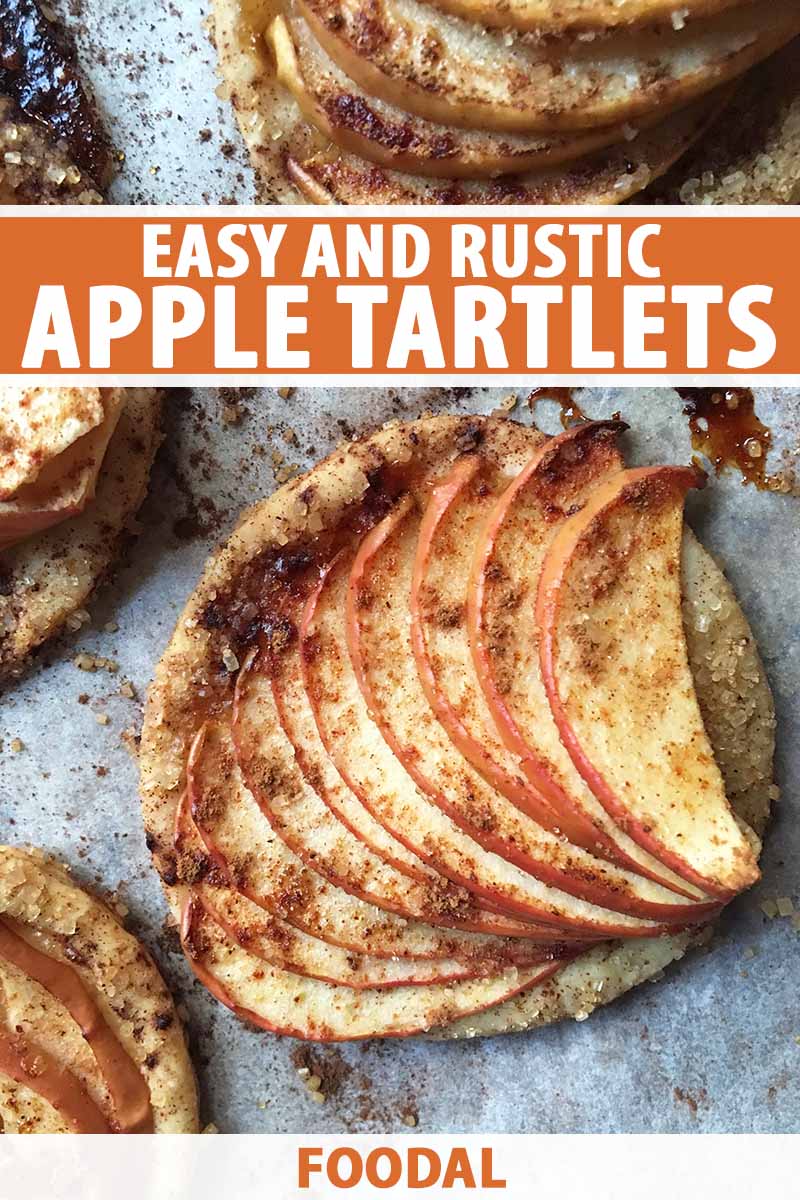
All I can think about are the bright blue skies, warm golden sunshine, and endless fruit that awaits us when we get there.
What can I say about apple picking that hasn’t already been said? That there’s something wonderful about standing amongst rows of trees, many of them heavy with fruit, the yeasty smell of fallen, fermenting fruit in the air?
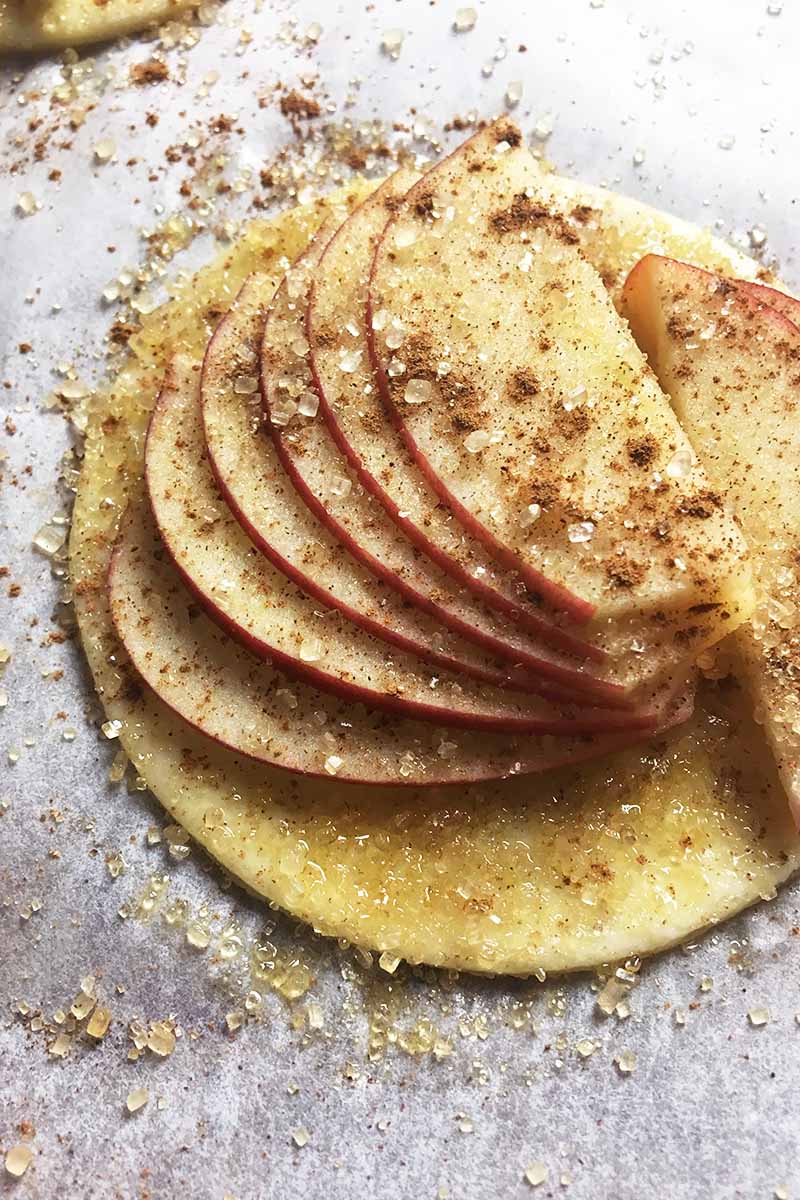
That trekking out with your friends or family to an orchard, a basket slung over your arm, feels like a celebration, just like carving a turkey or chopping down a Christmas tree?
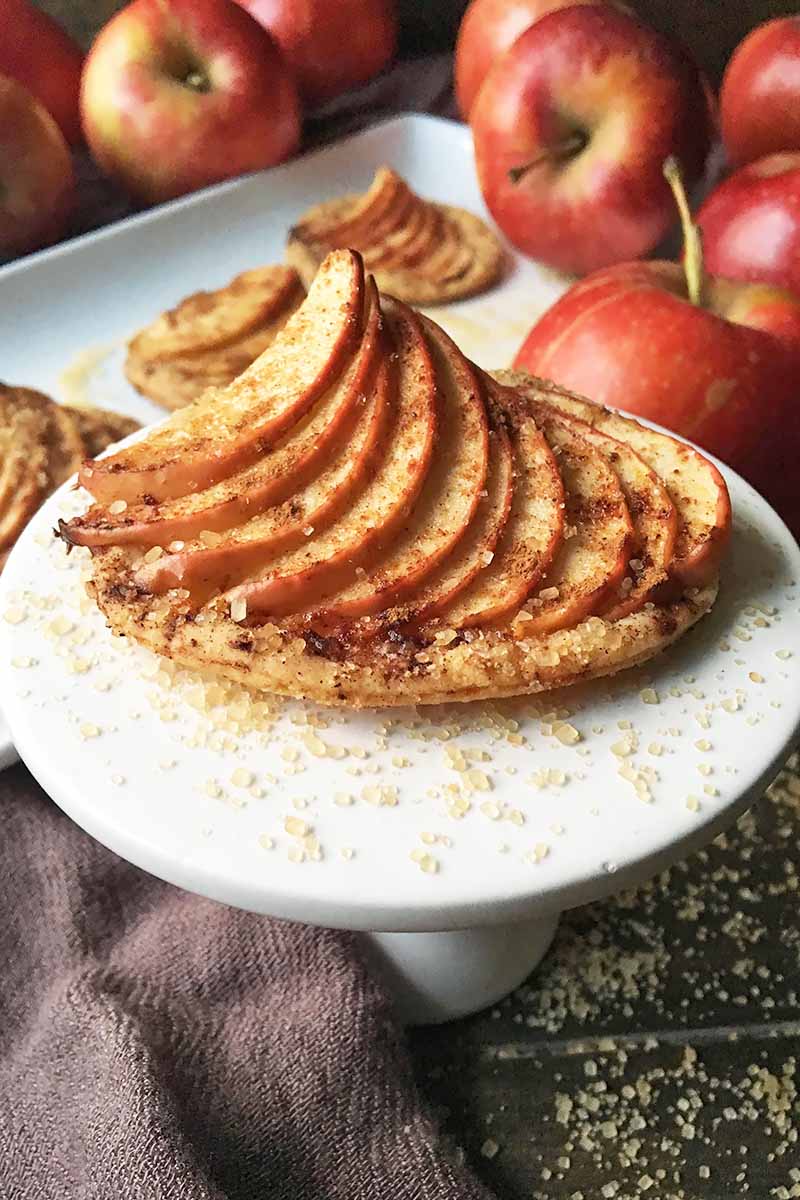
Or maybe that picking apples, to me, is one of those activities that’s so quintessentially autumnal, like pumpkin carving or sipping cider, that when you go with your friends and family, surrounded by the harvest and clutching your cardigan, you find yourself thinking:
This. This! This is why there’s just no time like fall!
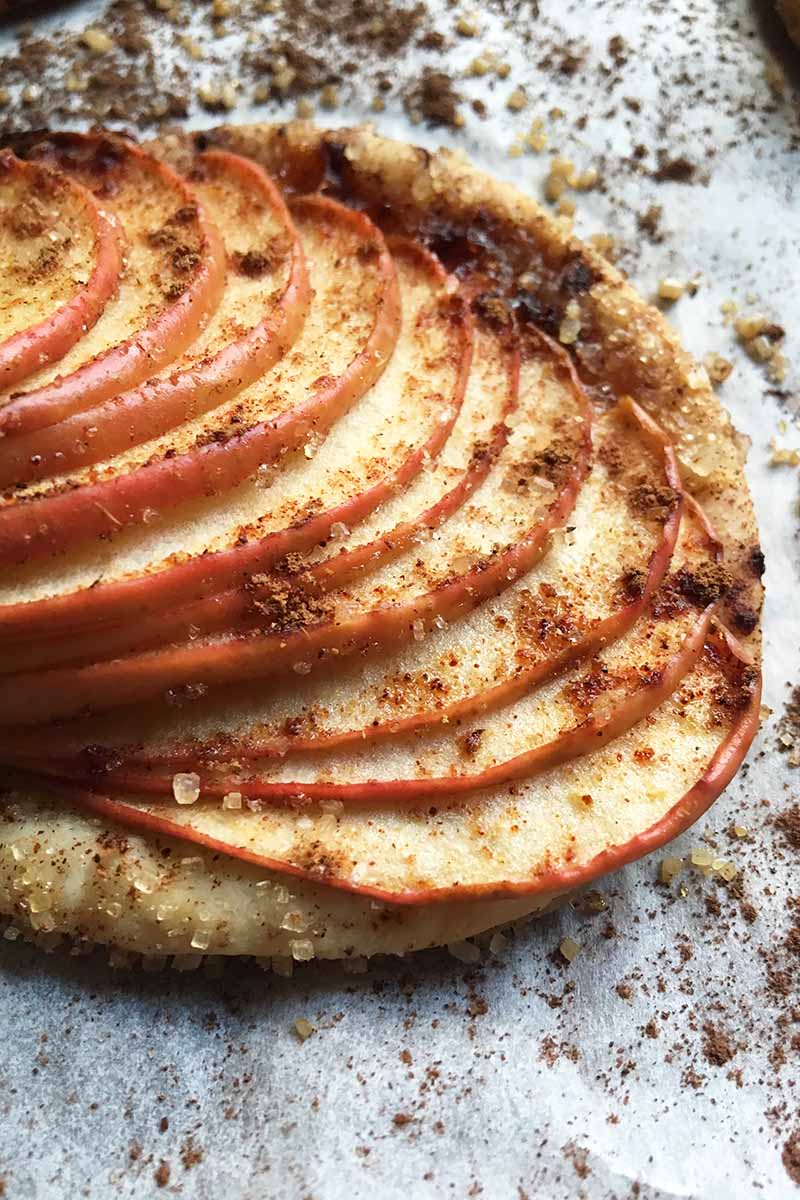
Back in our kitchen, we decided to make a dozen of these easy rustic tartlets, inspired by the happy exhaustion experienced after being outside all day.
There’s no pie or tart pan to worry about, no crust to fuss over. It’s just a simple, effortless pastry.
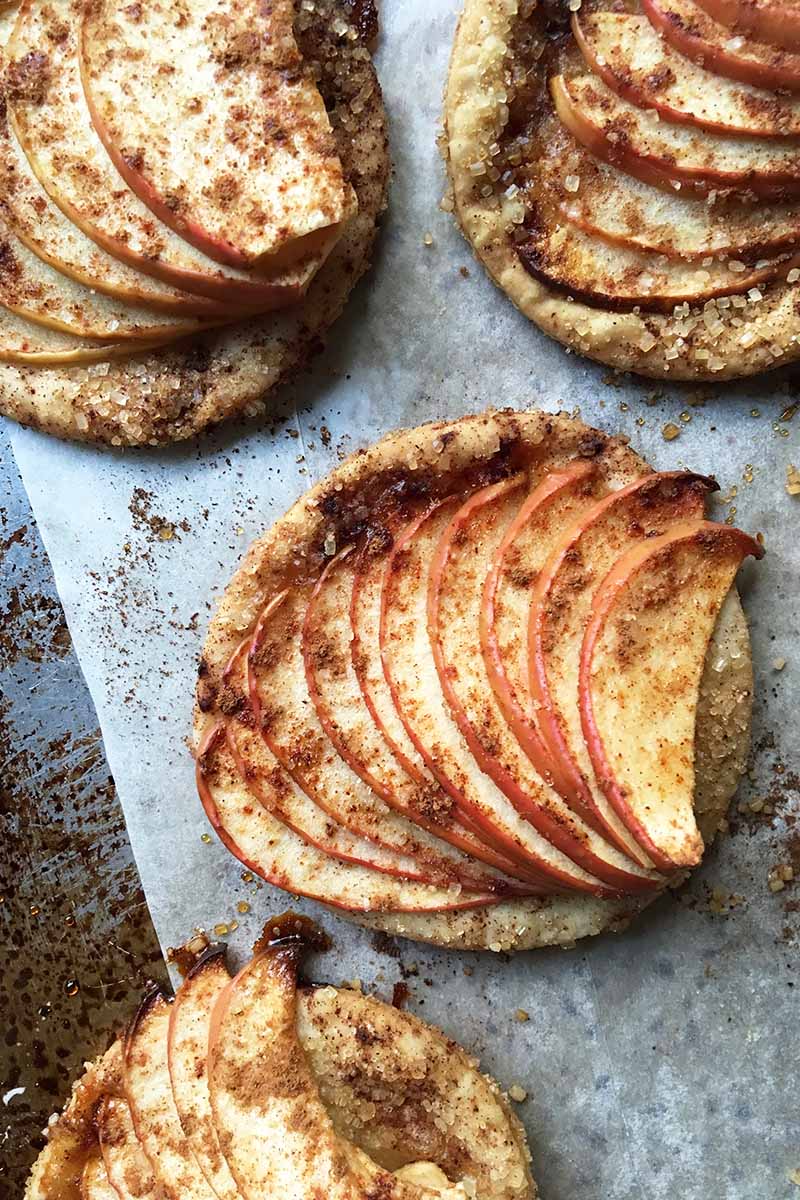
The idea for these simple tartlets isn’t hard to mimic: make a pastry dough and roll it out nice and thin. Use a biscuit or cookie cutter to cut out twelve or so rounds, then top them with sliced fruit in any pattern you’d like. Sprinkle with cinnamon and sugar, and bake until golden brown.
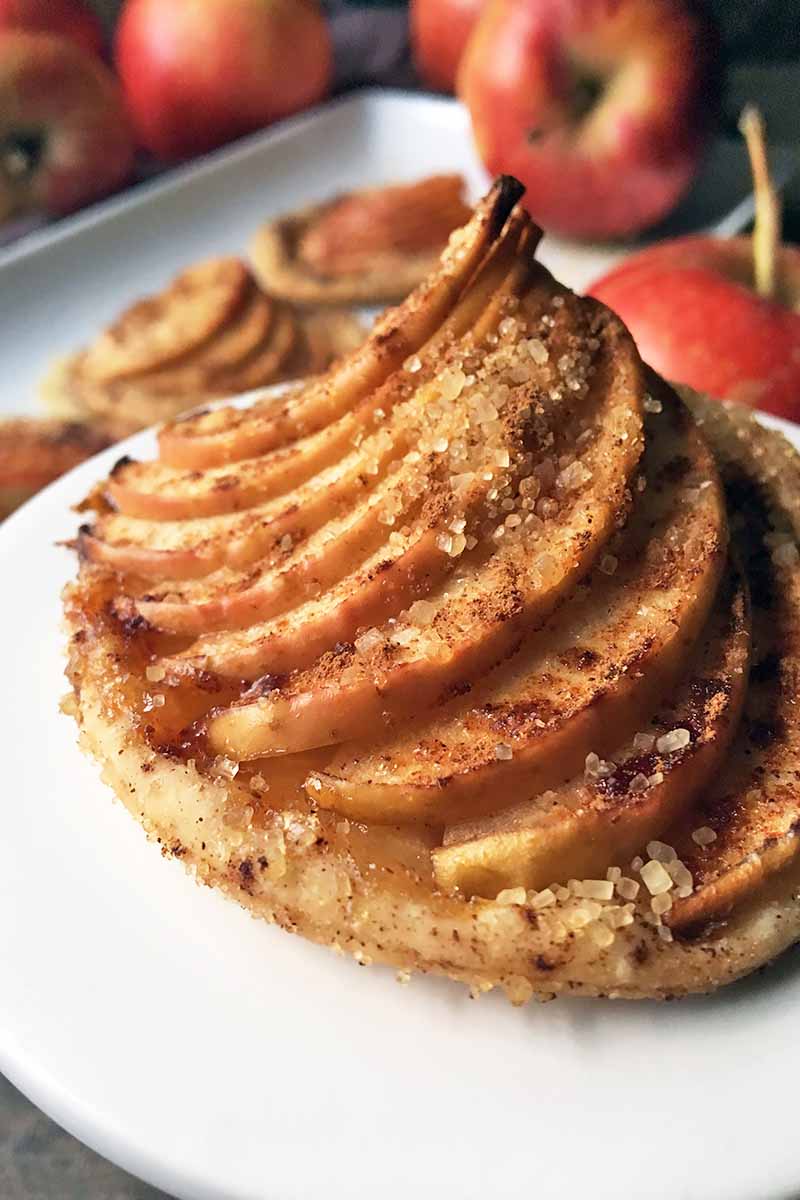
By the evening, Tim and I were full and satisfied, gazing at our delicious stash in the fridge, and feeling pretty thankful for this glorious season that is fall.
Oh, apple picking, you know what happiness truly is.
Print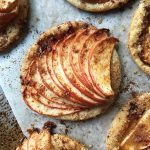
Easy Rustic Apple Tartlets
- Total Time: 2 hours
- Yield: 12-14 tartlets 1x
Description
These tartlets are rustic and easy, with a simple pastry base topped with thinly sliced apples, crunchy sugar, and a sprinkle of cinnamon.
Ingredients
For the Pastry Dough:
- 1 cup all-purpose flour, plus more for dusting
- 1/2 teaspoon salt
- 1/2 cup (1 stick) cold unsalted butter, cubed
- 1/4 cup cold water
For the Toppings:
- 3 apples (Honeycrisp, Gala, or Fuji are preferable options for baking)
- Juice of 1/2 lemon
- 1/3 cup turbinado sugar
- 2 teaspoons cinnamon
Instructions
For the Pastry Crust:
- Whisk together the flour and salt in a large bowl.
- Using a pastry cutter, cut the butter into the mixture until it is broken into pea-sized pieces all coated in flour.
- Add water, and use your hands to softly knead until a dough forms, adding more flour if needed. Do not over-knead the dough.
- Form the dough into a disc and cover in plastic wrap. Refrigerate for about 45 minutes to 1 hour, until the butter has re-hardened.
To Assemble and Bake:
- Preheat oven to 350°F. Remove the dough from the refrigerator and let sit at room temperature for 5-10 minutes.
- Roll pastry dough out on a floured surface until is 1/8 inch thick. Cut out circles using a cookie or biscuit cutter that is about 3 to 3 1/2 inches in diameter.
- Quarter the apples and cut into thin, even slices. Arrange in any design you prefer, such as a fan. Lightly brush the exposed flesh of the apples with lemon juice.
- Arrange apple slices on top of dough rounds. Sprinkle the top of the apples and the exposed pastry with turbinado sugar and cinnamon.
- Bake for 30-45 minutes, until the pastry turns lightly golden brown and the apples have shriveled slightly. Serve warm.
- Prep Time: 30 minutes
- Cook Time: 30 minutes
- Category: Tarts
- Method: Baking
- Cuisine: Dessert
Keywords: apple, tart, tartlet, pastry, cinnamon, fall
Cooking by the Numbers…
Step 1 – Make the Pastry Dough and Chill
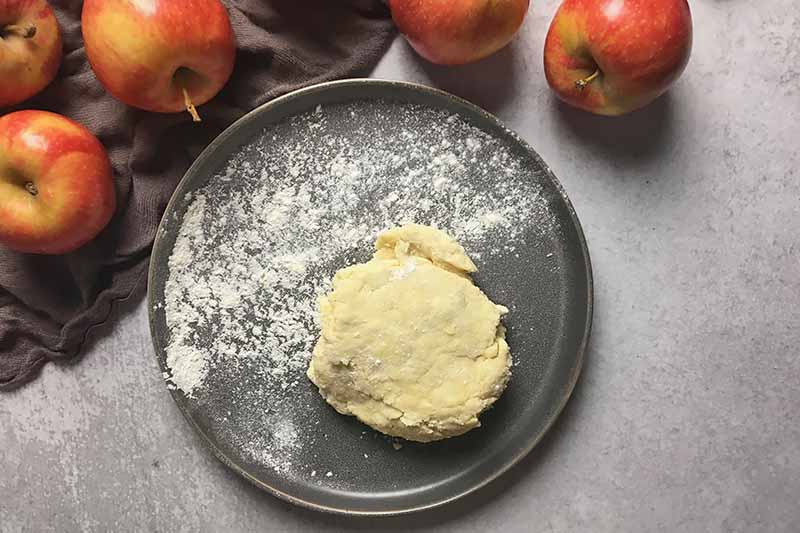
Whisk together the all-purpose flour and salt in a large bowl. Slice the cold unsalted butter into small cubes.
You can equal parts all-purpose and your choice of another type of flour if you prefer baking with whole or ancient grains. Both einkorn flour and spelt flour will work fine.
Using a pastry cutter or two knives, cut the butter into the flour mixture until it is broken into pea-sized pieces that are all coated in flour. Add the water, and use your hands to gently work the mixture into a solid dough without overmixing it, adding more flour if needed.
Form the dough into a disc and cover in plastic wrap. Refrigerate for about 45 minutes to 1 hour, until the butter has re-hardened.
Make the pasty dough ahead of time! It can stay in your refrigerator for up to 5 days, or in your freezer for a couple of weeks.
A little scared to make pastry? Perfect your pie game with our helpful how-to guide!
Step 2 – Roll Out
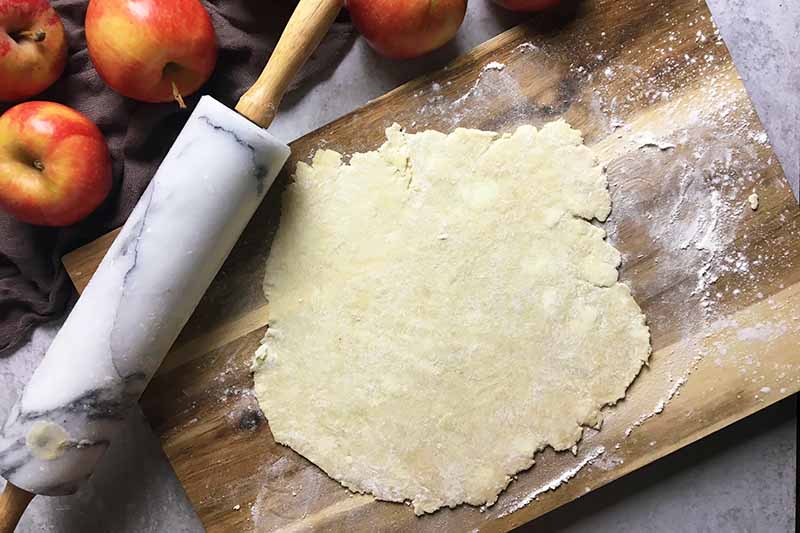
When you’re ready to bake, remove the dough from the refrigerator and let it sit at room temperature for 5-10 minutes.
On a floured surface, roll out the round with a rolling pin until very thin, about 1/8 inch thick. Depending on the space you have to work, you may need to roll out half of the dough at a time.
Step 3 – Cut and Chill

Using a floured biscuit cutter or cookie cutter, cut out 12-14 circles, depending on your preferred tartlet size. We used a cookie cutter with a 3 1/2-inch diameter, which yielded 14 circles.
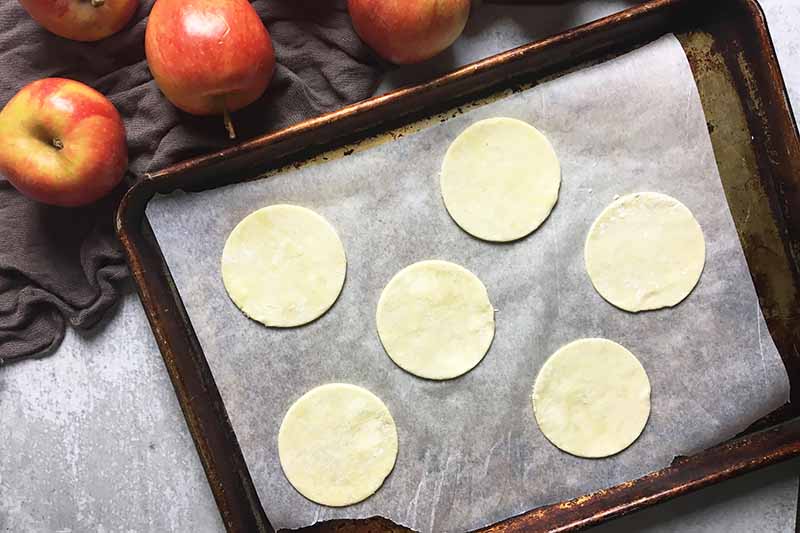
Divide the circles between two baking sheets lined with parchment paper, leaving about an inch of space between each circle.
Place the baking sheets in the fridge as you prepare the fruit in the next step.
Step 4 – Slice the Fruit
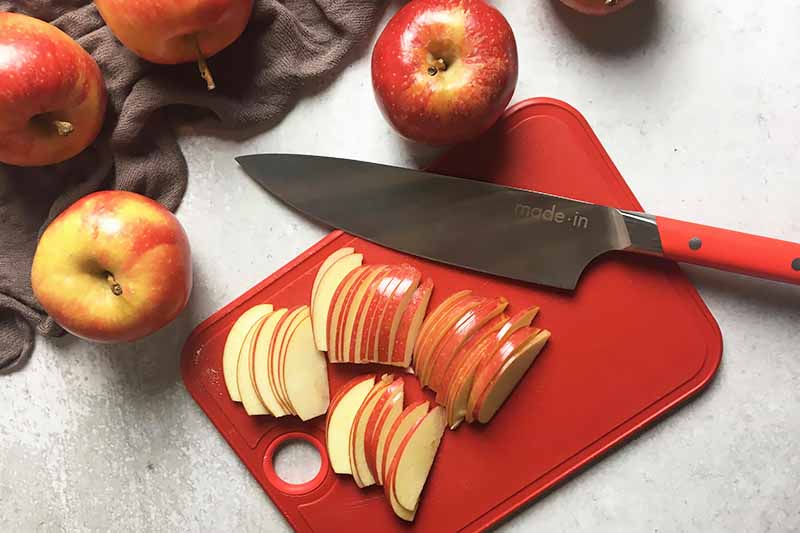
Quarter and slice the apples very thinly and uniformly. For a beautiful presentation, fan out various numbers of slices.
Brush the slices with the juice from half a lemon to prevent browning.
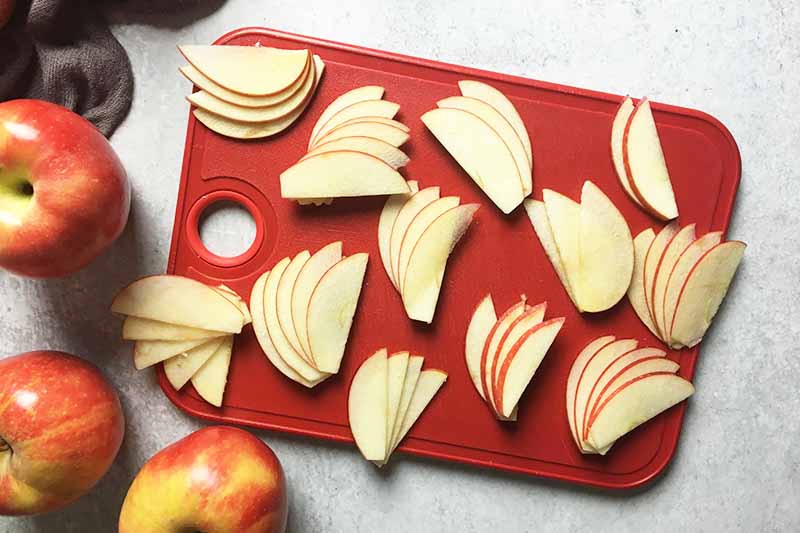
Not a fan of the skin? Peel it off before cutting the fruit into slices.
Use whatever varieties you can find at your local orchard. At the store, choose varieties that are crisp and flavorful. Honeycrisp, Gala, and Fuji are all great selections.
Step 5 – Assemble
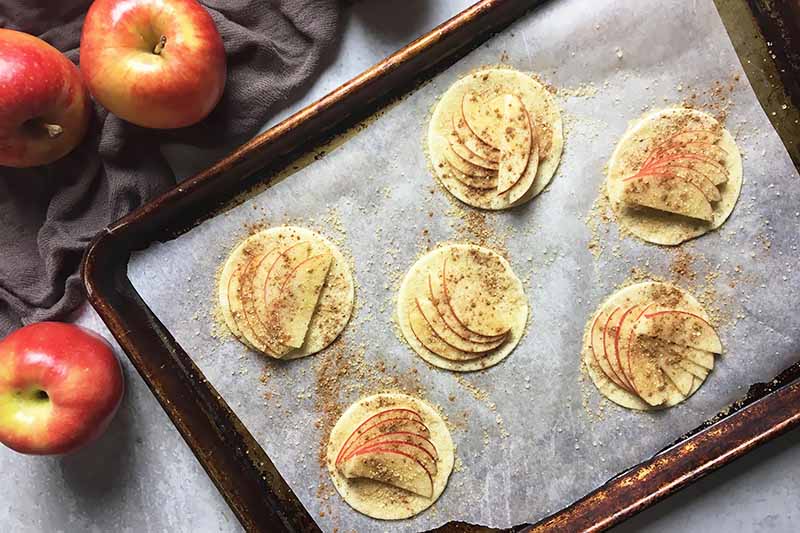
Remove the pastry circles from the refrigerator. Place and arrange the slices on top of the pastry circles.
Spread the tops with a generous sprinkle of turbinado sugar. Lightly dust with cinnamon.
Step 6 – Bake
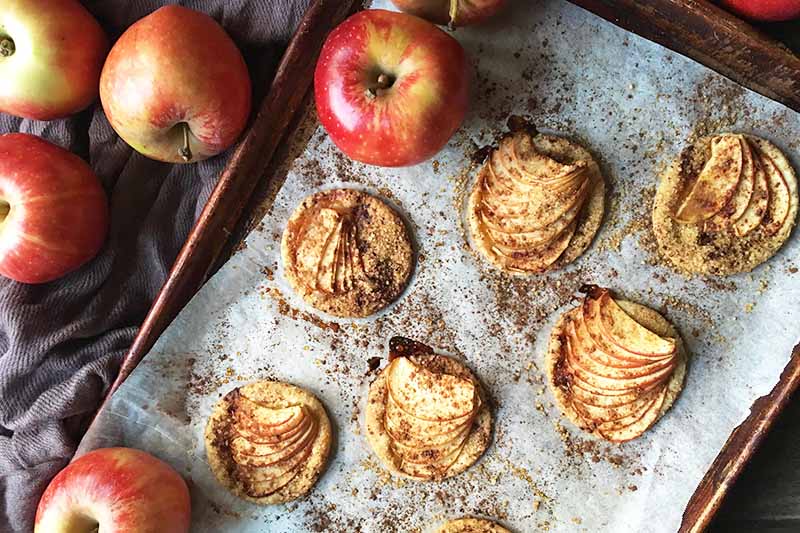
Place the baking sheets in the oven. Bake for about 30 minutes, or until the pastry is a light golden brown, and the slices have shriveled slightly.
Serve warm.
Pick Apples in the Day, Make Dessert in the Evening
These no-frills tartlets are an effortless dessert to make after returning home from a long, fruitful day spent outside picking fall pommes.
With a simple pastry crust, sliced fruit, and a sprinkling of sugar and cinnamon, my recipe is both humble and delicious.
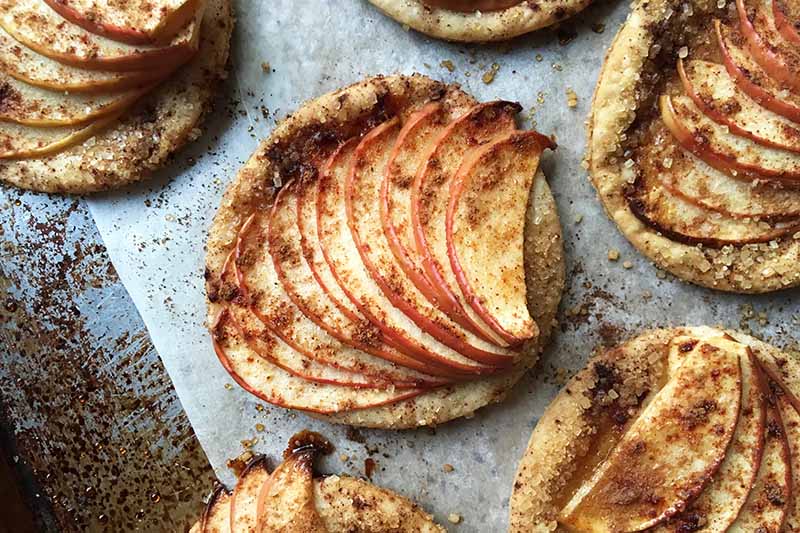
Although we do love making a classic French Apple Tart, sometimes it’s best to go the easier and more casual route, to save time and and relax with those you love most.
Do you have other ideas of what to do with the rest of the fruit you picked? Maybe some puffy dumplings or a strudel? We’d love to hear about some of your best recipes! Leave a comment below, and try some more of our favorite pomme pastry recipes:
Photos by Nikki Cervone, © Ask the Experts, LLC. ALL RIGHTS RESERVED. See our TOS for more details. Originally published on October 5, 2012. Last updated: September 27, 2022 at 15:29 pm. With additional writing and editing by Nikki Cervone.
Nutritional information derived from a database of known generic and branded foods and ingredients and was not compiled by a registered dietitian or submitted for lab testing. It should be viewed as an approximation.
About Shanna Mallon
Shanna Mallon is a freelance writer who holds an MA in writing from DePaul University. Her work has been featured in a variety of media outlets, including The Kitchn, Better Homes & Gardens, Taste of Home, Houzz.com, Foodista, Entrepreneur, and Ragan PR. In 2014, she co-authored The Einkorn Cookbook with her husband, Tim. Today, you can find her digging into food topics and celebrating the everyday grace of eating on her blog, Go Eat Your Bread with Joy. Shanna lives in Nashville, Tennessee, with Tim and their two small kids.

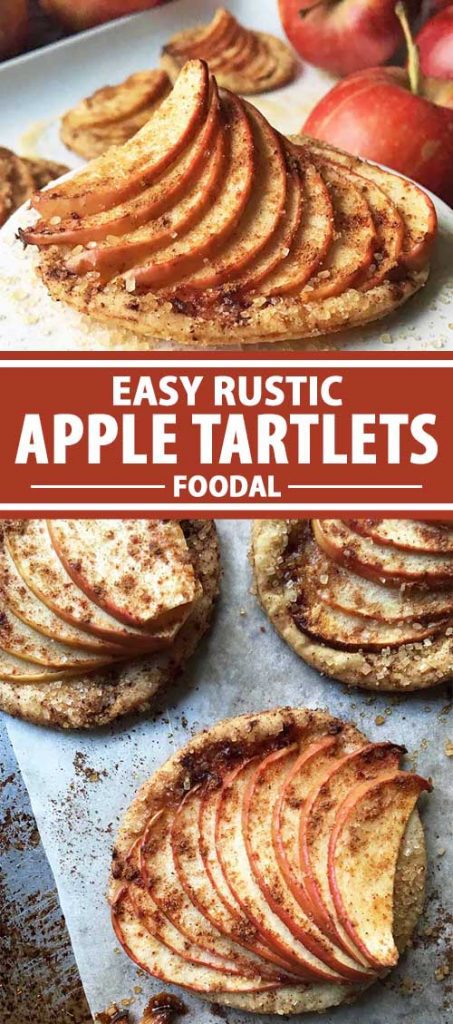

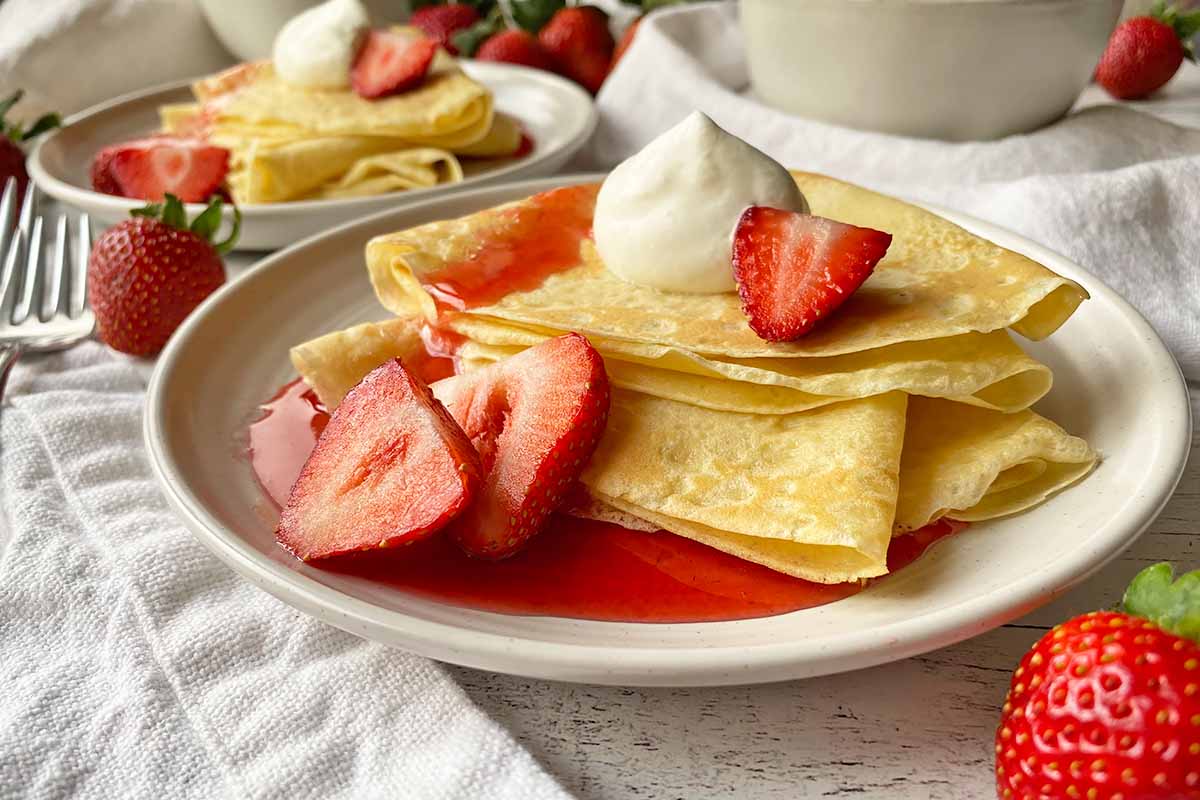

The pictures in this post are SO BEAUTIFUL. I can feel your joy for the season just looking at them.
Also, I was looking to see where I could source einkorn flour in Ontario and surprise! It’s apparently very similar to red fife flour (a staple in our house). I do love me some heritage wheat. Less tummy aches and bloat-y feelings.
Yay for heritage wheats, indeed! I’ve actually never heard of red fife but will have to research — thanks for the mention!
Update: So fun to learn a little more about a new-to-us wheat! Red fife looks like a great heirloom wheat, probably on the level of spelt. One of the main reasons we like einkorn flour though is that it has only 14 chromosomes (for a good explanation of the chromosomes issue, visit the Nourished Kitchen link in the post.) Thanks again, Laura!
Is this all purpose einkorn flour or what they call high extraction flour?
Candice, It’s all-purpose einkorn. : )
What a fun fall thing to do! 🙂
Happy fall, and happy Friday.
I love visiting apple orchards! I go to the local one here and get a bag of honeycrisp every year. I’ve never gone apple picking though. Those look delicious!
I’ve been researching a lot in to ancient wheats and I’m so happy to see you using them as well!
Everything is just gorgeous!
So kind, Erin, especially from a talent like yourself. Thank you!
We went apple picking a few weeks ago – it’s so true that the whole experience – the rows of trees and the apples and the sky and the secretly munching on apples in the anonymity of the orchard – it’s all amazing. These tartlets are right up my alley – straightforward and not too fancy – lets the apples do the talking! Yum!
Let the apples do the talking! I love that!
so with this kind of flour, is soaking not necessary?
It’s not as pressing as it is with other flours (although, to be real, we don’t always soak spelt either), but it is still *best* to soak it. Anytime you can increase enzymes, reduce phytic acid and aid digestion of flours, it’s best to do so. I didn’t soak it for these tartlet crusts because they were last minute, but I did soak it twice this past week for our kefir-soaked pizza crusts. Hope that’s helpful?
yes, thanks! it’s hard to keep track of what needs to soak and what doesn’t need to be soaked. the amount of information out there is both frustrating and exciting.
I’ve heard of Einkorn, but haven’t used it yet. These little apple tartlets are tempting me to go source some!
I am SO wanting to go apple picking now so that I can make these!
The rusticity of these tarts is what makes them truly appealing! Just like the apples, with their uneven colors. Aren´t fruit trees a wonderful thing?
I’m another one completely in love with these tarts. I must see if I can get a hold of einkorn flour, I love what you say about it.
I’m just starting to learn a bit more about heritage wheats and this eikorn is definitely one I’ll try. Oh, and apples lately? The best. Loving Fall. Great recipe!
What a fun day trip! These tartlets look absolutely delicious. Though I don’t try to avoid wheat, I’m definitely intrigued by einkorn flour now.
Being a Tennessean myself ( a native who has recently moved back) I know that apples in this state are something that many natives wait all year for. I grew up with an apple tree in my grandparents’ yard and to this day I still enjoy shaking each branch until every sweet juicy fruit hits the ground. There is nothing better than a fresh apple, all crisp and succulent. I love the simplicity of your recipe. It certainly highlights the deliciousness of the season.
I haven’t picked an apple yet this season. I keep thinking I need to do something about this before the trees are bare. Sounds like a lovely day filled with warmth and sweetness.
Thanks, Nikki!
I just made these and tossed the apples with some greek yogurt and it was delicious! And I was reading in the comments about soaking your flour… how does that work?
Hi Kira!
That sounds great–the apples mixed with yogurt.
Soaking grains and flour in an acid medium helps make them easier to digest, increases enzymes, and available nutrients. For certain grains/legumes like rice, oats, or beans, you can soak them in water overnight with either a tablespoon of lemon juice, apple cider vinegar, whey, or cultured dairy. For recipes, like pancakes or bread, many times you can let the batter soak overnight and that will do the same thing. Depending on the food, what is happening many times is that good bacteria are feeding on the sugars present and creating enzymes (like sourdough). Typically soaking wheat or flour definitely helps with digestibility and available nutrients so we like to do it, but you don’t have to. Einkorn already poses less problems than modern wheat since it is less hybridized (it only has 14 chromosomes and modern wheat has 42).
Phew–sorry that was so long, hope it helps!